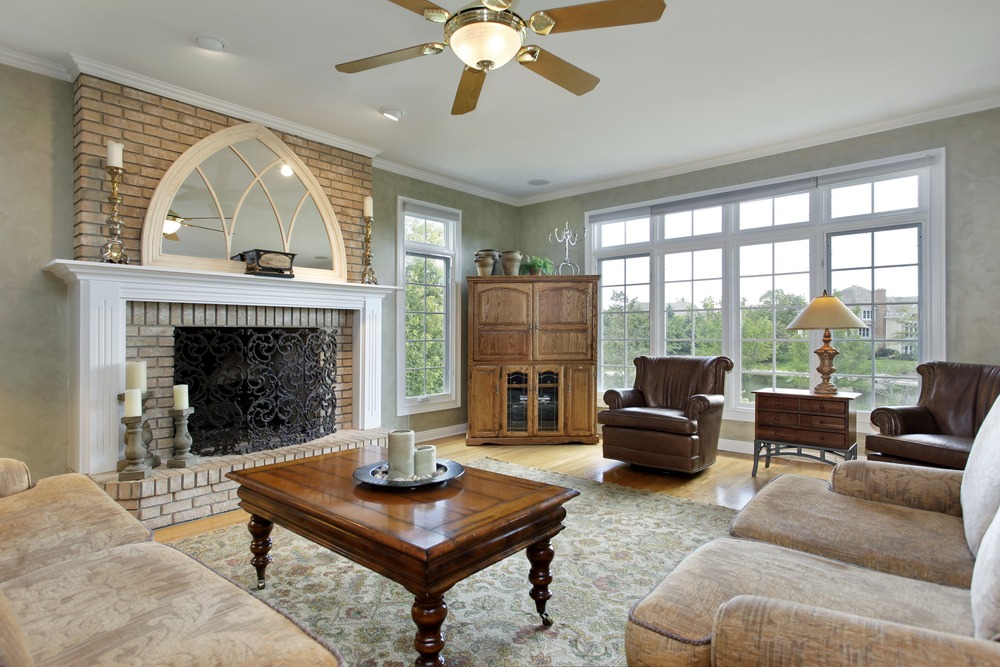Successfully flipping a home is all about knowing what aspects of a home to renovate, what to restore, and what to highlight with your renovations. This is particularly true of older homes with good bones. There are thousands of homes out there with brickwork, brightly colored tile and other relics of the past that could either make or break your flip. Are those vintage kitchen cabinets going to look welcoming and homey or just old and dated? Will the 50-year-old wood floors be seen as historical or just worn out?
A skilled flipper knows the difference and can design their home rehab plan based around the good historical aspects of a home while ripping out and replacing the pieces that are no longer suited to modern buyers. Today, we’re here to talk about how to make the right decisions on which features should be renovated, restored, or left just how you found them.
Structural Integrity
The first priority for any flip project is home safety, and sometimes the right decision is difficult to make. If a feature in the home–no matter how beautiful–is rotted, eaten by insects, or otherwise falling apart you have two options: Restore or Replace. If you really like a feature that turns out to be dangerously worn out, you can try to reinforce and restore to retain the original charm, or even replace with a piece that is almost identical. Alternately, you can rip out the damaged feature and put something new in that fits your rehab vision for the home.
The same rule applies for anything that was built in an unsafe way, even if it’s as sturdy as the day it was built. Badly wired light fixtures, shelves at risk of falling, and unstable decks are among the most common issues to watch out for.
Form Follows Function
Next, is the basic principle that form follows function. A useful feature of a home is always more valuable than a useless feature. Take some time to think about how each feature in a home, especially the older and seemingly oudated features, will flow in a modern family life. This is particularly important when deciding what to do about older kitchens and laundry rooms. The way we cook and kitchen trends in general have changed a great deal in the last several decades, meaning that a charming kitchen built in the 60s may seem cramped and inconvenient to a modern owner who is looking for a much more open kitchen design.
Claw-foot bathtubs, undersized cabinets, and unnecessary room dividers are all examples of renovation opportunities to ensure that form follows function, substance over style.
Color Scheme
Another very important aspect of home flipping is your color scheme. Your rehabilitation plan no doubt includes a color palette you will use when deciding on wall paint, new tile, accent pieces, and staging props. Along these lines, be aware of any feature in the home that clashes with your overall color scheme and the preferences of the modern buyer.
One of the most well-known crises of color come from homes built in the 70s when garish red, orange, and green tile work and busy fabrics were all the rage. Make sure the entire home matches your intended color scheme and don’t be shy about ripping up old carpets (something most flippers do by default) and replacing old tilework that clashes with the modern buyer.
Accent Features
An interesting aspect of the home flip renovation is that some unusual or bold home features can be used as an accent. While you may be an expert at bringing a shabby home back up to an appealing neutral with soft wall paint and modernized fixtures, there is an undeniable charm when a home has one or two historical features.
An ancient fireplace surrounded by warm brickwork, A brightly tiled kitchen backsplash that adds a dash of color to an otherwise sleek and modern kitchen. Even lovely historical molding can make a difference to buyer, causing your flip to stand out as something unique while still offering all the modern comforts, practicality, and style of other successful homes on the market.
Restoration vs Renovation
Finally, there’s the restoration option. Renovation is when you start over with a feature, rebuilding or significantly changing it. Restoration is when you put some expertise and elbow grease into enhancing a few historical aspects of the house you’re flipping.
If, for example, you decide to keep those old wood floors, you can restore them to their original beauty and use modern materials to make sure they last. Fill the scratches, renew the color with stain, and then finish with a sealing coat that will help to prevent future accidental damage to the floor.
——-
So how do you know which aspects of a home to renovate vs restore? Always start with your vision of the final product, as this will help you decide overall what you want to keep and change. In cases where you’re not sure, check to see if a feature is safe and sturdy, how useful it is to the residents (especially in a predominately senior community), and if it can serve as an accent to highlight your vision. For more great information on how to fund your flip renovation project, contact us today!

